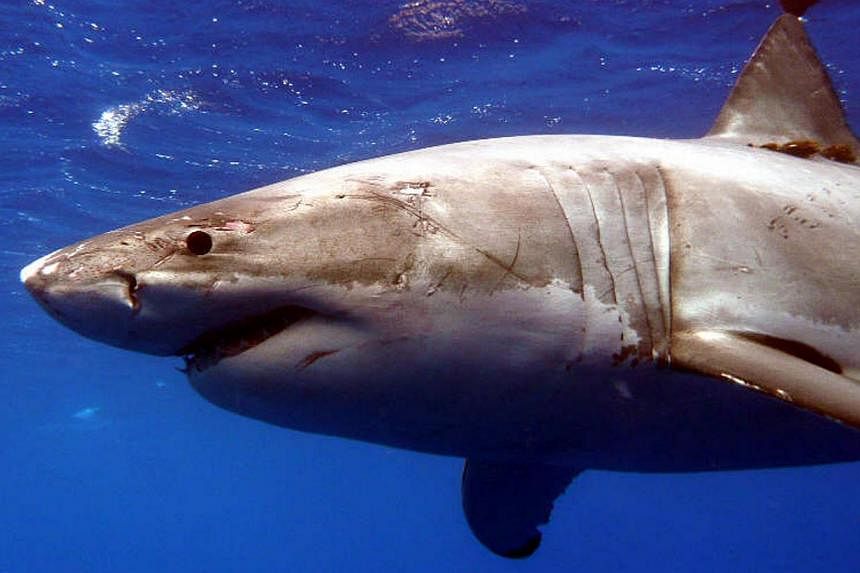ORLANDO (REUTERS) - A new look at research on great white sharks in the eastern north part of the Pacific Ocean indicates the population is likely growing rather than endangered, according to an international research team.
"The good news is that white sharks are returning to levels of abundance," said George Burgess, director of the Florida Programme for Shark Research, who led the new study published on Monday in the journal Plos One.
The findings upend an impression of alarming low numbers left by a 2011 Stanford University study which led to petitions by conservationists to add white sharks to state and federal endangered lists, Burgess said.
Stanford researcher Barbara Block said in an e-mailed statement to Reuters the data in the two studies is not inconsistent. "We stand firmly behind the findings of our study, and our ongoing research only increases our confidence in its accuracy," Block wrote.
Great whites are the largest of the predatory big-toothed, flesh-eating sharks, growing as big as 6.1m.
Burgess credits the growth in sharks to 40 years of US federal protections for marine mammals that sharks feed on, especially sea lions and seals. In addition, white sharks have been protected as a prohibited species, making it illegal to bring a great white to dock.
Burgess said he and some other shark experts "did a double take" when the Stanford researchers calculated the population of adult and near-adult great whites along the central California coast at 219.
The Burgess study claims that the Stanford researchers then claimed inappropriately the 219 count represented half of the adult and near-adult population in the entire eastern north Pacific, which runs from Alaska down to Central America.
Burgess' group of 10 international shark scientists set out to test the Stanford data and methods. The group pegged the entire population of white sharks along the whole California coast at more than 2,000 and likely rising.
Burgess said Stanford researchers made assumptions about the white shark population from those feeding off seals and sea lions at Farallon Islands and Tomales Point. Burgess said they should have taken into account sharks that feed elsewhere and for juvenile sharks whose numbers appear to be growing.
The Stanford study also made comparisons between the low number of sharks and the greater numbers of killer whales and polar bears. Burgess said the comparison was misleading given the greater ease of counting whales, which must surface for air, and bears on land.
Burgess said data from the US east coast indicate shark populations growing there, too.
Previews of Burgess' team's study were given to state and federal authorities which factored in decisions to maintain white sharks level of protection rather than step it up, he said.
Burgess said it is important to avoid listing a species as endangered if it does not need that level of protection to conserve resources for species that do need help. "This is a real pleasure for us in the biology business to be talking about because it's a success story," Burgess said.

